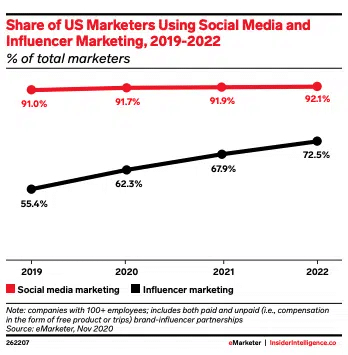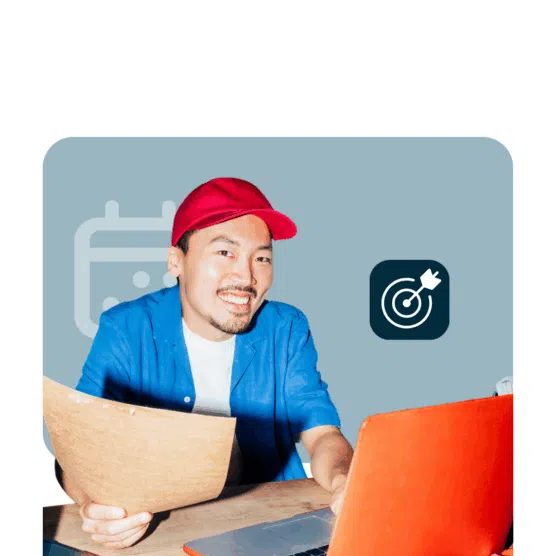“Like us on Facebook” has become such a common phrase that it’s hard to imagine the platform any other way. If the Facebook Like was a person, it would have been bar or bat mitzvahed by now. But we haven’t always wondered how to get more likes on Facebook.
In 2007, the social networking platform FriendFeed was the first to give users the ability to click like next to a social media post. Then in 2009, Facebook added an identical feature to its platform. And ever since, we’ve all been trying to figure out how to get Facebook likes.
The potential audience Facebook offers is massive. Even if the number of total users shrunk for the first time in early 2022, getting Facebook likes still promotes your content to some 2.11 billion accounts.

Source: Digital 2022 Global Overview Report
Read on for tips to help you understand the role likes play in your Facebook marketing and why it’s important that your likes are authentic. Then we’ll go over some practical suggestions to help you get more likes on Facebook.
Click any of the tips below to jump ahead, or keep scrolling and read the guide in its entirety.
Bonus: Download a free guide that teaches you how to turn Facebook traffic into sales in four simple steps using Hootsuite.
Why are Facebook likes important?
Likes are a ranking signal for Facebook’s algorithm
Likes are important because they contribute to which posts Facebook’s algorithm pushes to the top of users’ feeds. The algorithm is a black box of math that orders posts. Lots of factors go into the box, and a user’s feed comes out.
Likes and the algorithm have a long history together. In fact, the first feed algorithm was based on likes alone.
Details about the current Facebook feed algorithm are a trade secret. But likes are probably an important part of it. They’re also a part that everyone can see.
They serve as social proof
Most of the factors in Facebook’s algorithm are invisible to users, but likes are different. Because anyone can see them, likes provide social proof to influence your audience. This makes likes a key part of getting users to engage with your Facebook content.
Social proof is just a fancy word for peer pressure. More specifically, social proof refers to the way people tend to do what other people are doing when they’re not sure what they’re supposed to do.
If you’re alone next to a cliff, you might hesitate to jump off. But if you see all your friends jump off, you’ll be more likely to try it yourself. User engagement works the same way.
Likes are proof that other users have already engaged with your post. When other users see this, they’re more likely to do the same.
Should you buy Facebook likes?
Given how important likes are to a thriving Facebook presence, it can be tempting to buy them. We’ve seen the ads — “High quality! 100% real and active users! Affordable prices!” But no matter what that pop-up says, buying Facebook fans is not a good idea.
For one thing, there are ethical reasons not to do it. But if you need a Hootsuite blog post to tell you that, then I probably won’t convince you now.
There is also the risk that you’ll get caught. Facebook’s official stance on fake likes is ambiguous. It doesn’t explicitly ban buying likes. It also doesn’t say that the platform won’t go after users that buy likes.
Even if Facebook itself doesn’t care if you buy likes, your customers probably do. Building trust with your customers is one of the main benefits of social media marketing. If they find out that you’re buying likes, you throw all of that away.
On a purely self-interested level, buying Facebook likes is still a bad idea even if you’re never caught. This is because you’re not just lying to other Facebook users; you’re lying to yourself. All those fake likes you buy will gum up your social monitoring efforts.
Social monitoring is when you use data related to your brand from social media to gain business insights. Platforms like Hootsuite offer powerful tools to analyze the data your social media presence generates. When you fill up your Facebook presence with noise like fake likes, you make it harder to find out what real people want.
How to get more likes on Facebook
There are basically two ways to get more Facebook likes: increasing your reach and increasing engagement. But the two often go hand-in-hand.
Increasing your reach means getting more eyeballs on your content. The more people who see your post, the more chances it has to get likes.
Increasing engagement means getting more likes from the people who see them. When you make content that your audience wants to see, you get likes more efficiently than if you hit Post on the first thing that comes into your head.
It sounds deceptively simple. But we’ve got eight tips to help you master the fine art of getting more Facebook likes.
1. Start with strong social marketing fundamentals
When you know what you’re trying to accomplish on social media, all parts of your social media presence benefit. Before scheduling your next Facebook masterpiece, think about how that post contributes to your overall marketing goals.
Good social media fundamentals mean following a social media marketing plan that aligns with your business objectives. After all, successful content marketers are six times more likely to have a documented strategy in place.
2. Know what your audience wants to see
To make content that your audience will engage with, you have to spend some time finding out what they like. Making decisions based on data from your specific context will help you make posts that get more likes.
Luckily, there are plenty of tools to help you analyze your data. You can use Facebook’s official analytics platform, Business Manager, to dig into data from all of Meta’s social media platforms.
There are also third-party services, like Hootsuite Analyze, that integrate data analysis across all social media platforms.
Once you’ve got the data, make sure you focus on the right numbers. Engagement metrics like applause rate (the number of approval actions a post receives relative to your total number of followers) and virality rate (the number of people who shared your post relative to the number of unique views it received) can help you pinpoint the type of content that resonates with your audience.
3. Know when your audience is active
One simple way to get more likes is to post when your audience is most active. Although the chronological timeline has gone the way of the dodo, the algorithm still prioritizes recent content.
It’s simple, but not always easy. First, you have to find out when the best time to post on Facebook is.
There are general trends that apply across the board. Between 8:00 a.m. and 12:00 p.m. on Tuesdays and Thursdays is the best time in general.
Tools like Hootsuite Analytics can use data from your social media presence to find out the best times to post based on your account’s historical performance.

Source: Hootsuite Analytics
Once you know where your sweet spot is, the next step is to consistently post content during those times. Users (and algorithms) pay attention to accounts that post regularly. But accounts that flood their feeds turn them off. Strike the right balance by using a Facebook posting schedule.
4. Stay up-to-date with Facebook trends
You’ll attract more attention when you stay on top of the latest trends. Facebook users are looking for content that’s relevant to them.
Facebook Reels are the fastest-growing format on the platform, and Facebook promotes them pretty much everywhere. Take advantage of the rise of Reels to get more likes from your short-form video content.
People are still using Facebook as a way to research brands, too. Hootsuite’s 2022 Social Media Trends report found that 53% of users 16–24 use social media as their primary way to research brands. Give users what they want by posting content with information about your brand.
More and more users are making in-app purchases in their social media apps. Meet your audience’s needs by setting up a Facebook Shop to get more likes across the platform.
Source: Facebook
Take things a step further and put your brand on Facebook’s Live Shopping feature. It’s a great way to get eyes on your business and likes for your Facebook page.
But don’t just blindly follow trends without making sure they fit within your overall content strategy. The Facebook echo chamber was an important cause of the disastrous pivot to video in the late 2010s. If you try out a trend, make sure to look at the data to see if it’s working for you.
5. Pin a popular post
A lot of these tips boil down to “figure out what’s doing well and do more of that.” When you pin a popular Facebook post, you’re giving it more visibility. This gives a post with a lot of likes that chance to get even more.
Source: Monte Cook Games on Facebook
Monte Cook Games, for example, pinned their latest Kickstarter campaign to maximize its visibility. As more users see the post, the snowball effect kicks in,l boosting their presence on both platforms.
6. Work with Facebook influencers
Brands are engaging in influencer marketing more than ever. In 2022, two-thirds of US social media marketers report using influencer marketing. Just three years before, in 2019, only half did.

Source: eMarketer
Collaborating with an influencer, especially one that can speak directly to your target audience, can help you produce engaging content your followers won’t want to miss.

Source: ASOS on Facebook
When clothing brand ASOS, for example, reposts content from influencers with their own large audience, both sides benefit from the exposure.
7. Take advantage of cross-promotion
If you’ve got a great following on other social channels, take advantage of it! More than 99% of Facebook users have accounts on other social media platforms.

Source: Digital 2022 Global Overview Report
Try promoting Facebook-specific content on other social media to increase your posts’ visibility.
Source: SingerSewingUK
Just over 80% of Twitter users are also on Facebook. By tweeting about an upcoming Facebook event, Singer makes it easier for their audience to stay up to date with their social media activity.
Cross-promotion isn’t limited to social media, either. Don’t forget to link to your Facebook page on your website and include it on your business cards. Make it easy for people to find your brand on social media — after all, they can’t like your posts if they never see them.
8. Run ads
Some of the tips here will help you improve your organic reach, but unfortunately, organic reach is in decline on social media. Without paid promotion, a brand’s posts will only be seen by about 5% of their followers. But if you do choose to run ads, you can take advantage of Facebook’s detailed ad targeting to make sure your posts reach your ideal audience.
RemarkableAS doesn’t wait for word-of-mouth to spread the news about their product’s latest features. They make use of the data Facebook collects to make sure their message gets to the people most likely to respond positively to it.
Manage your Facebook presence by using Hootsuite to schedule posts, share video, engage with followers, and measure the impact of your efforts. Try it free today.







